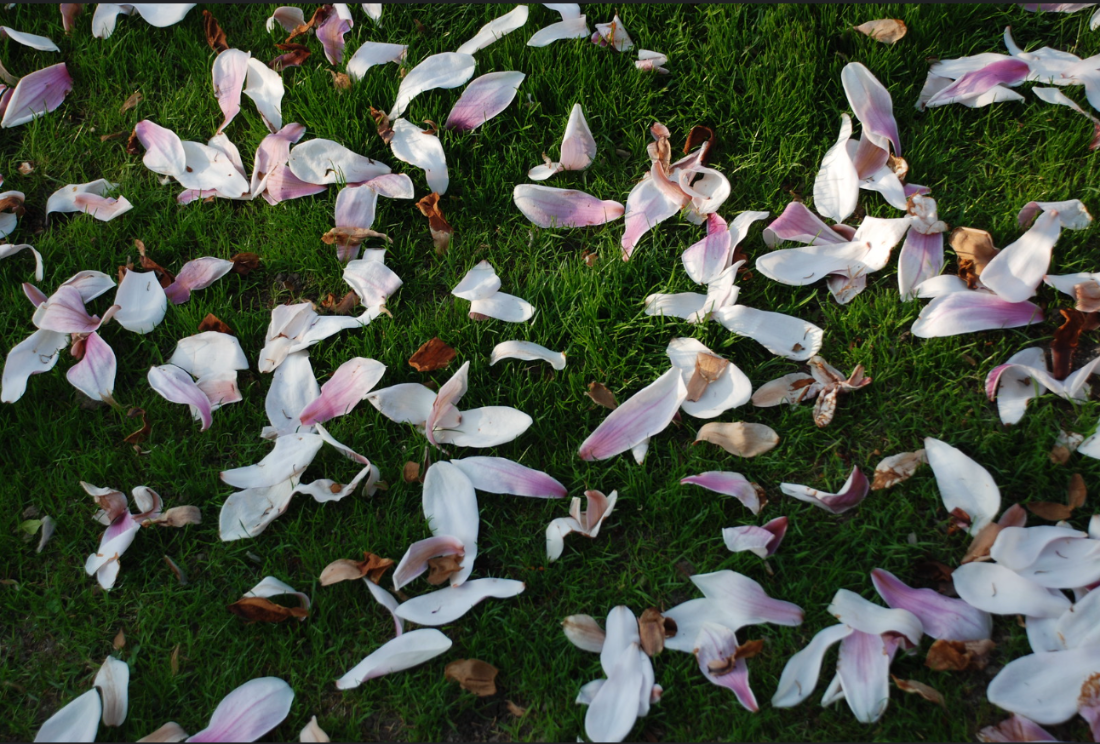Teach This Poem, though developed with a classroom in mind, can be easily adapted for remote-learning, hybrid-learning models, or in-person classes. Please see our suggestions for how to adapt this lesson for remote or blended learning. We have also noted suggestions when applicable and will continue to add to these suggestions online.

Look closely at the print of magnolia leaves.
The following activities and questions are designed to help your students use their noticing skills to move through the poem and develop their thinking about its meaning with confidence, using what they’ve noticed as evidence for their interpretations. Read more about the framework upon which these activities are based.
(Teachers, this lesson and poem deals with grief. You may want to consult with a school guidance counselor, social worker, or therapist to best discuss how to use this lesson in your school.)
- Warm-up: (free-write/draw) What comes to mind when you hear the following quote: “and so much lost you’d think / beauty had left a lesson:"? Share your writing/drawing with a classmate.
- Before Reading the Poem: Look closely at the print of magnolia leaves. What do you notice about the flower? What questions might you have?
- Reading the Poem: Silently read the poem “Once the Magnolia has Blossomed” by Ed Roberson.What do you notice about the poem? Note any words or phrases that stand out to you or any questions you might have.
- Listening to the Poem (enlist two volunteers to read the poem aloud): Listen as the poem is read aloud twice, and write down any additional words and phrases that stand out to you.
- Small-group Discussion: Share what you noticed about the poem with a small group of students. How does this poem connect to the image and the line from the beginning of class? After reading the poem, what do you think of this line: “and so much lost you’d think / beauty had left a lesson:"?
- Whole-class Discussion: The Poetry Coalition, an alliance of more than 25 independent poetry organizations across the United States, is devoting March 2023 to exploring the theme “and so much lost you’d think / beauty had left a lesson: Poetry & Grief” How is this poem related to grief and/or the theme? What does the poem say about grief
- Extension for Grades 7-8: Choose to create an illustration or collage inspired by this poem, or choose to write your poem. (Teachers, you can find more resources about poetry and grief and the Poetry Coalition here.)
- Extension for Grades 9-12: Choose to read another poem about grief. Write a short response that answers this question: how does this poem compare to the poem that you read and how does it connect to the theme: “and so much lost you’d think / beauty had left a lesson?” Share your poem and thoughts with your classmates in a discussion. Discuss: "What do you think might be the lesson that beauty has left?"
“Chen writes, ‘If grief is love with nowhere to go, then / Oh, I’ve loved so immensely,’ which is a line that has stayed with me since I first read it. This reminds me that grief is held and placed; that the grievers are part of the source. The departure in our bodies shifts us anew. We become fresh and green in our sorrow and cosmic heartache.” As part of the Poetry Coalition’s programming, the Academy of American Poets asked five renowned poets to reflect on poems that helped them better understand or process grief. Read Janice Lobo Sapigao’s micro essay on “Greensickness” by Laurel Chen, and find more micro essays on grief.
Personification: the endowment of inanimate objects or abstract concepts with animate or living qualities. Read more.
